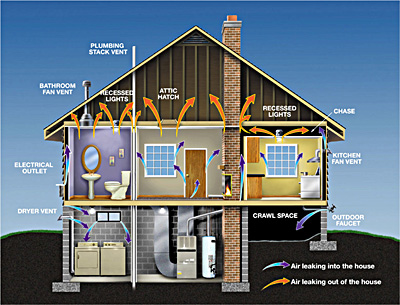 Brad Plumer passes along some bad news on the effectiveness of residential energy efficiency upgrades. A massive controlled test in Michigan showed that it doesn’t pay for itself:
Brad Plumer passes along some bad news on the effectiveness of residential energy efficiency upgrades. A massive controlled test in Michigan showed that it doesn’t pay for itself:
The researchers found that the upfront cost of efficiency upgrades came to about $5,000 per house, on average. But their central estimate of the benefits only amounted to about $2,400 per household, on average, over the lifetime of the upgrades. Yes, the households were using 10 to 20 percent less energy for electricity and heating than before — but that was only half the savings that had been expected ahead of time. And households weren’t saving nearly enough on their utility bills to justify the upfront investment.
The culprit appears to be the real world. Engineering studies suggest that residential upgrades should pay for themselves in lower energy costs within a few years, but in real life the quality of the upgrades is never as good as the engineering studies assume:
These engineering studies may not always capture the messiness of the real world. It’s easy to generate ideal conditions in a lab. But outside the lab, homes are irregularly shaped, insulation isn’t always installed by highly skilled workers, and there are all sorts of human behaviors that might reduce the efficacy of efficiency investments.
….In this particular study, the economists found that the federal home weatherization program was not a particularly cheap way to reduce CO2 emissions. Although energy use (and hence carbon pollution) from the homes studied did go down, it came at a cost of about $329 per ton of carbon. That’s much higher than the $38-per-ton value of the social cost of carbon that the US federal government uses to evaluate cost-effective climate policies.
Back to the drawing board.













